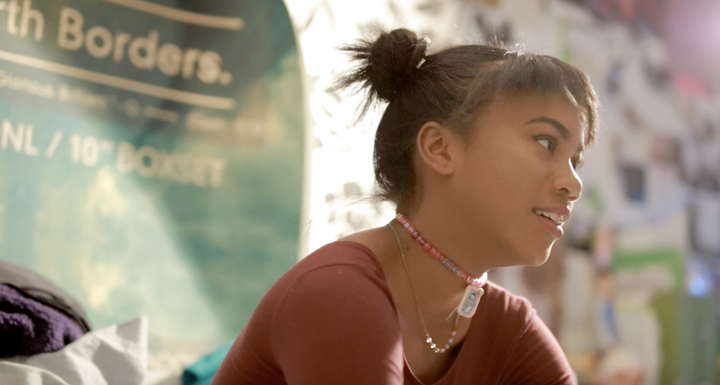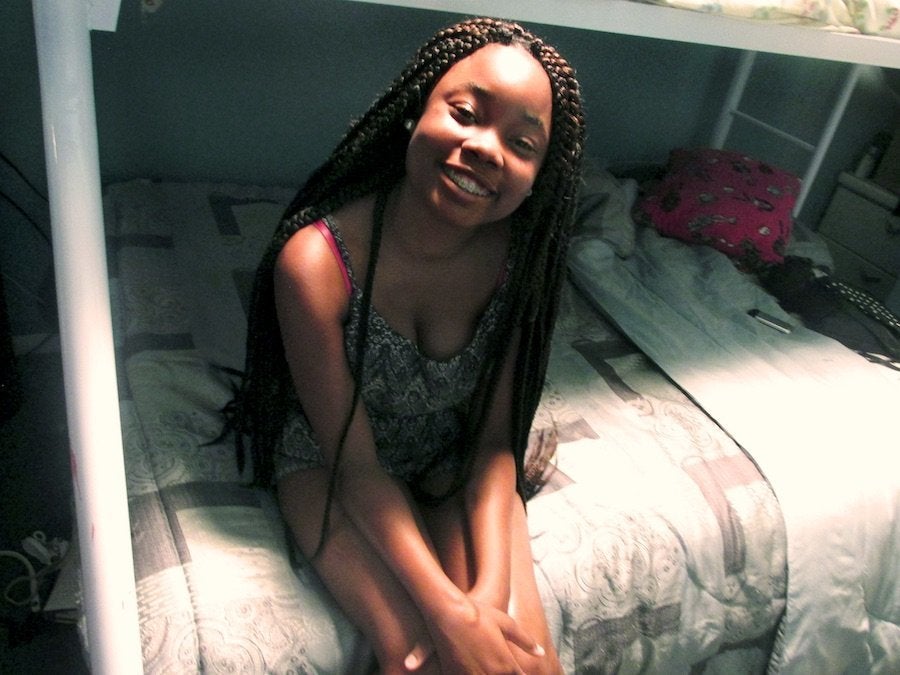At the end of "All This Panic," one of the central subjects, Lena, sits in the back of a cab, her dyed blue hair fluttering in the night wind, and admits, "It's hard to put [this] in a way that isn't cliched and doesn't make it seem silly. But it's not silly."
The "it" Lena refers to is a moment she and her friends shared at the Metropolitan Museum of Art -- an acid trip that culminated in a greater understanding of art, time and aging. But it could just as easily refer to her graduation into adulthood, captured and brewed into the moody documentary by Jenny Gage and her husband Tom Betterton, which premiered to enthusiastic reviews at Tribeca Film Festival.
While Lena's revelation could sum up "Panic," it's merely one of many "aha" moments within the film, which gently documents the lives of seven teenage women from New York City over the course of three years. In an hour and 19 minutes, their lives are bottled and magnified.

The result is empathetic and heart-wrenching. It may also be one of the most relatable films ever produced about young women, which is refreshing, but also really depressing, if you think about it. Even high school movies highlighting female protagonists that intended to be "relatable" still lack the substantial realism young women deserve. "Mean Girls" and "Ten Things I Hate About You" are funny and have reached cult status, but dudes aren't Heath Ledger and teachers aren't Tina Fey. That's why "Panic" feels revolutionary.
“I felt like being a woman, I missed these kind of films," Gage told The Huffington Post in an interview. “I think that they really feel empowered. They see that, 'Yes, our stories are important.'"
Gage and Betterton knew there were significant stories untold in their own backyard ... literally. They first molded the premise of "All This Panic" after gaining inspiration from their own teenage daughter. Unsure about how to define "teenage girl" in today's society, they dug deeper. Shortly thereafter, they began filming sisters Dusty and Ginger, who hail from the filmmakers' South Brooklyn neighborhood. Through the sisters, the filmmaking duo connected with and ultimately chose to follow the narratives of friends and classmates Lena, Sage, Olivia, Ivy and Delia.
While their plot lines weave together at points, Gage and Betterton respectfully allow each of the young women to maintain strong, separate identities throughout the film. Even when thematic similarities arise about love, philosophy, class, race and sexuality, each woman asserts her selfhood in a way that feels more honest than most exposés on youth today, whether fictional or nonfictional. Despite their "young age," the women on screen know more about themselves than adult society ever could feebly interpret, simply because that society rarely listens. The film shows that maybe the best way to tell teenagers' stories is to ask teenagers themselves.

The styling of the documentary also allows the women to fully share their voices. Described as a cross between "high art portraiture and cinema vérité," there is no distracting narrator or interference by adults. Betterton explained that he "shot the entire film with the same lens, [which was] the type of lens if you wanted to be close up, you literally had to be close to them."
Using lens flares and warm close-ups, Gage and Betterton took advantage of a New York landscape that's not often showcased in movies and television shows today. They shot in faraway spots like the Rockaways and Coney Island, which, they explain, was where the girls often wanted to be filmed. You won't see cool brunch scenes, Starbucks cups, or hipster vintage shops in "Panic." Because of that, it encapsulates the Brooklyn (and Manhattan and Queens) that most New Yorkers know. The girls' responses to these environments only highlights their camaraderie even more.
Most remarkably, the young women recognize their placement in the greater scheme of things, too. At one point, Sage concisely reveals media's oppressive nature toward young women: "They want to see us, but they don’t want to hear us…”
Gage and Betterton mentioned that during production, the young women were not divisive on or off the screen, contrary to the narratives we often receive about high-school-aged "mean girls." They wanted their friendships to strengthen, not strain. "They had so much respect and never talked behind each others' back in a malicious way. It was important they were supporting each other," assured Gage.
The teenagers we see in "All This Panic" come across as real and relatable. It just took a documentary like this to recognize that the actual lives of teenage women is a story worthy of the big screen.

